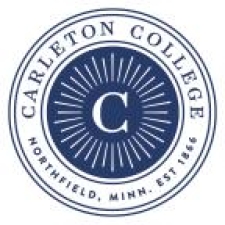
One North College Street
Northfield, MN 55057
United States
About
The most important thing our students gain is how to learn for a lifetime. Critical thinking, problem-solving, creativity, effective communication: are the tools that transform a collection of facts and figures into a way of understanding the world. Carleton’s faculty members are highly respected scholars, researchers, and practitioners in their fields. But above all, their first priority is teaching.
Every course at Carleton is taught by a professor—not a teaching assistant—in classes small enough to offer individual attention for our students. A student-faculty ratio of 9 to 1 ensures that Carleton students have plenty of opportunities for interaction with their professors.
Carleton’s student body is notoriously difficult to categorize, but if we had to choose just one word to describe them, it would be curious. They’re an intellectually insatiable group that approaches learning with enthusiasm, energy, and a uniquely Carleton brand of playfulness. Broad-ranging interests are common, and friendships seem to cross all traditional boundaries.
When people visit Carleton, they’re often surprised by the warmth and closeness of the campus community. Somehow they expect a leading liberal arts college to feel more formidable and competitive.
But as our students and alumni will tell you, there’s just something different about Carleton. Maybe it’s our small size. Or maybe it’s the round-the-clock proximity of so many creative minds.
Whatever the reason, Carleton is a place where students are likelier to cooperate than compete — and where working hard doesn’t mean forgetting how to play.
Cost
This is the average annual amount that first-time, full-time undergraduate students pay at this institution after subtracting all grants and scholarships from the cost of attendance.
Show Net Price details
This net price data shows the average amount students have paid, according to their family income, after subtracting all grants and scholarships.
College Profile
Show Undergraduate Student Body details
Student Success
Show Graduation Rate 4-yr Institution details
Show Retention Rate details
Campus Settings
Financial Aid
The following information pertains to first-time full-time undergraduate students.
Show Financial Aid details
Cumulative Debt
This section shows the median debt graduates incurred to complete their degree at this institution.
- Bachelor's Degree: $19,000
- Bachelor's Degree: 39%
Admission Information
- Common applications (online)
- ACT or SAT
- SAT subject tests recommended
- High School Diploma or GED
- Transcripts
- Letters of Recommendation
- Application Essay
- Supplement to the Common Application
- Accepts dual credits
- Accepts exam-based credits
Financial Aid Application Deadline
January 15 for new students applying Regular Decision. Other Application required: Noncustodial Parent Profile from College Board if applicable, Business/Farm Supplement, if applicable.
Regular Decision Deadline
January 15th
Early Decision Deadline
Fall: November 15th / Winter: January 15th

